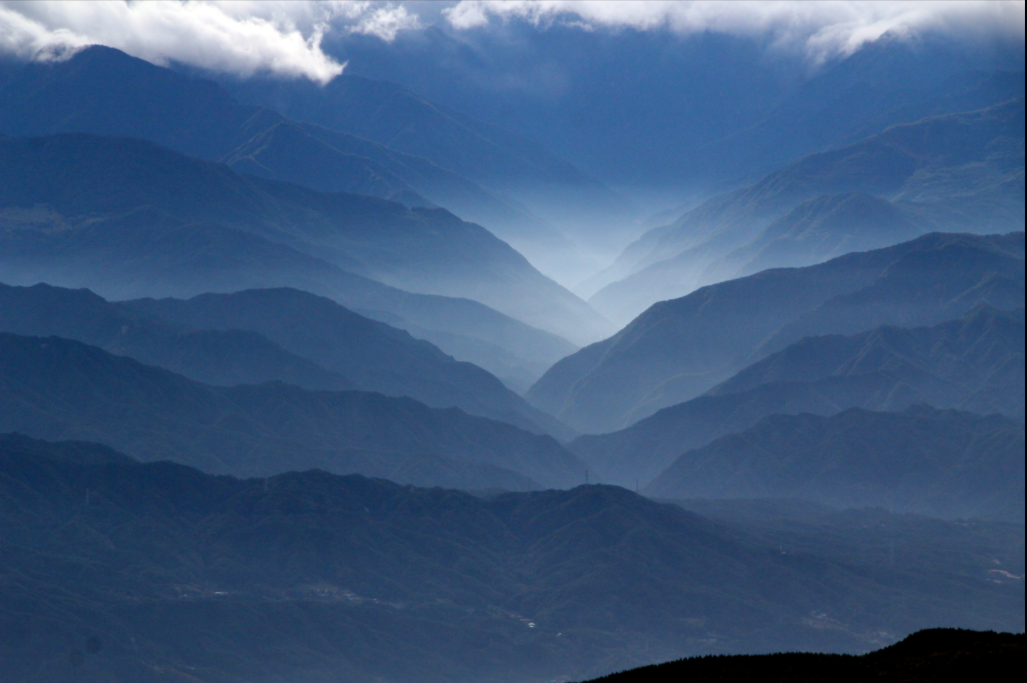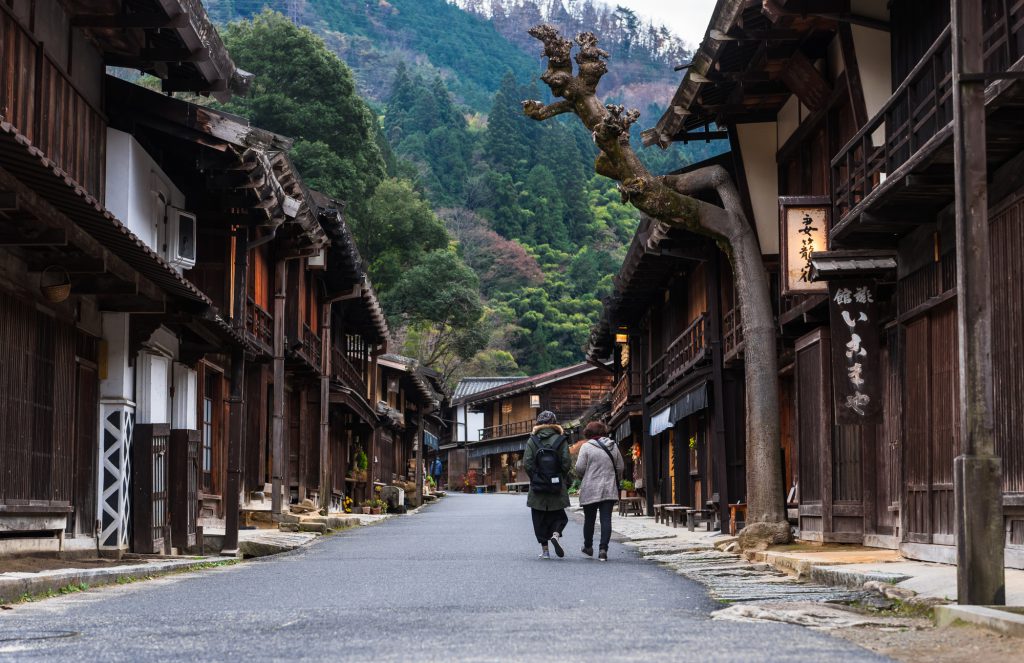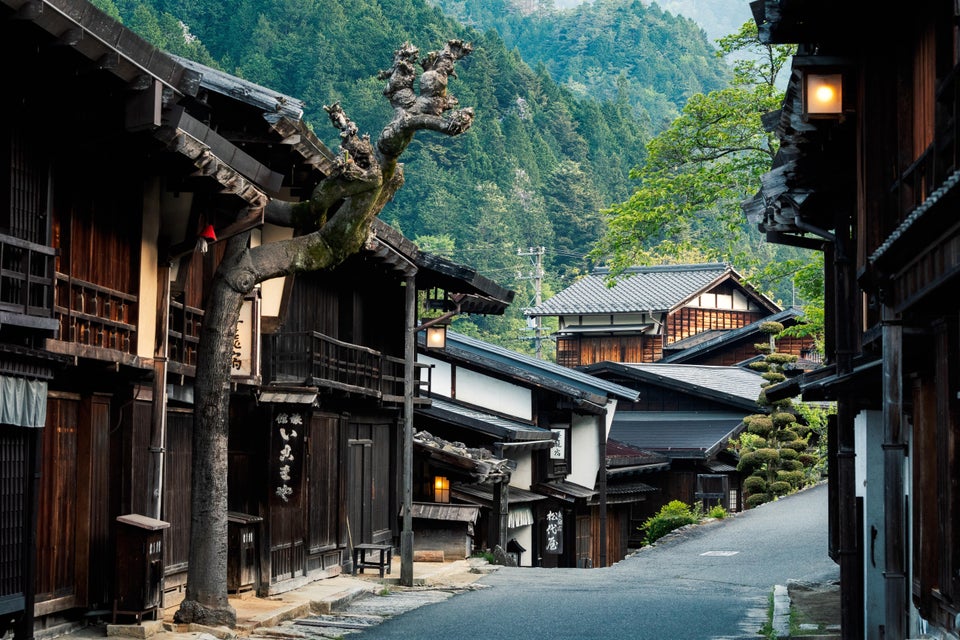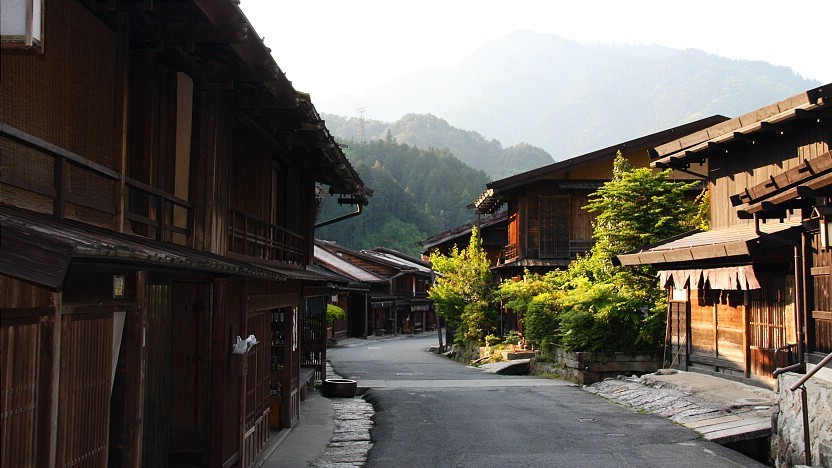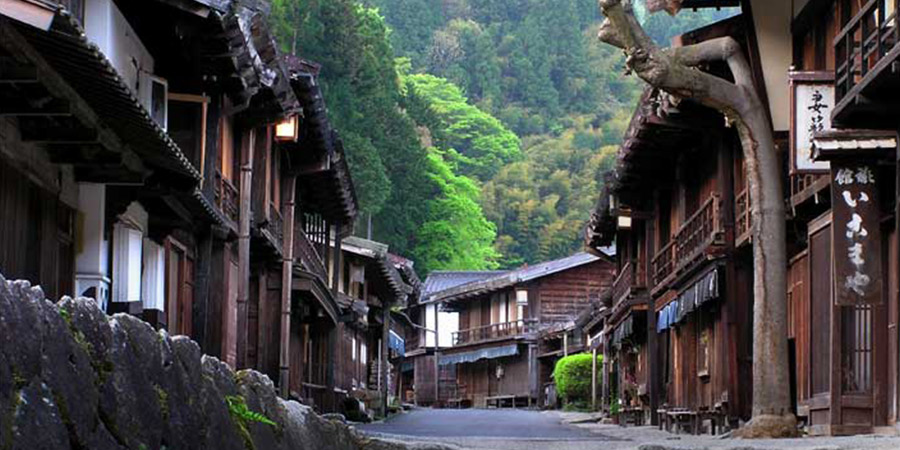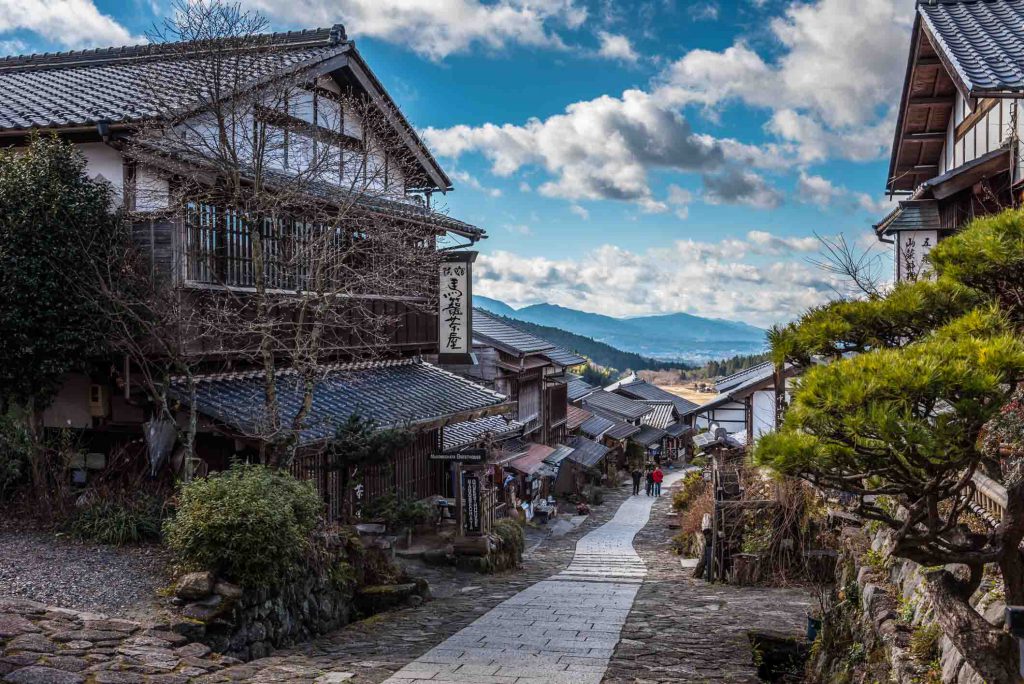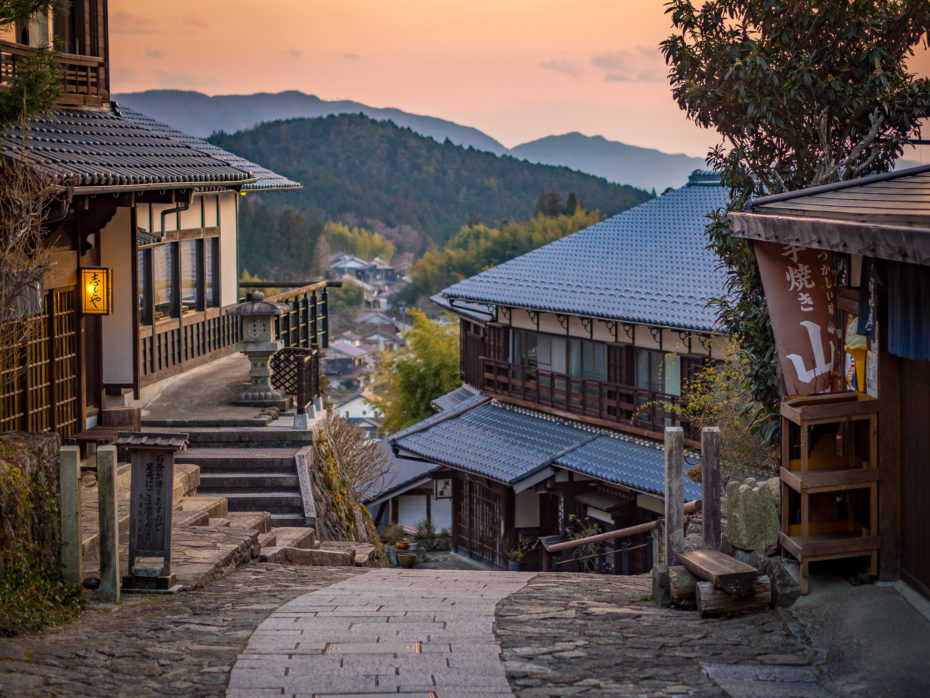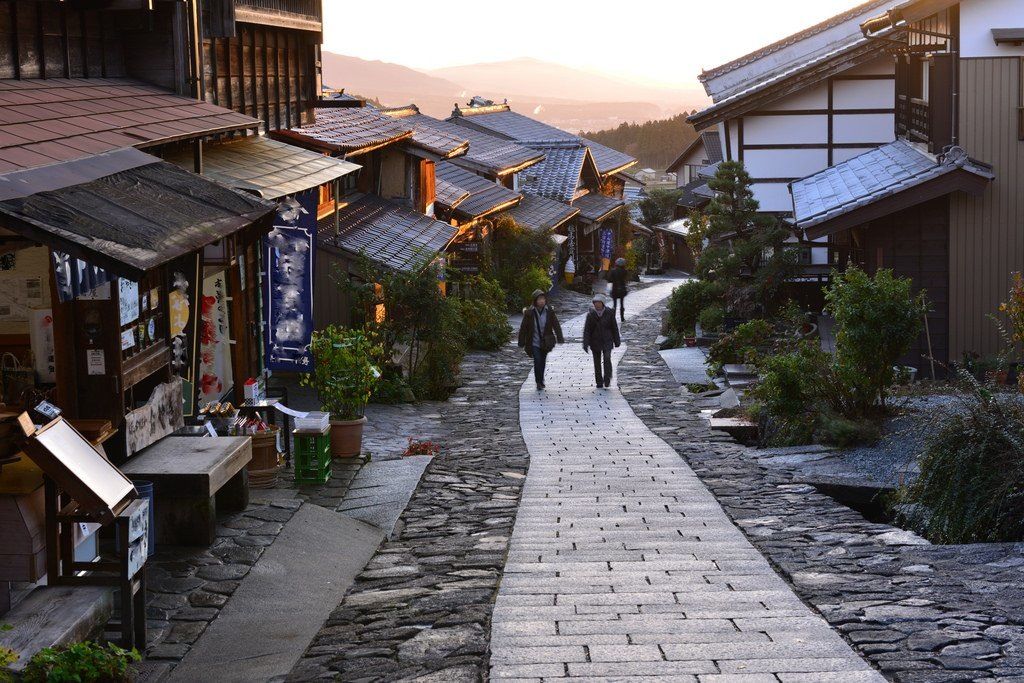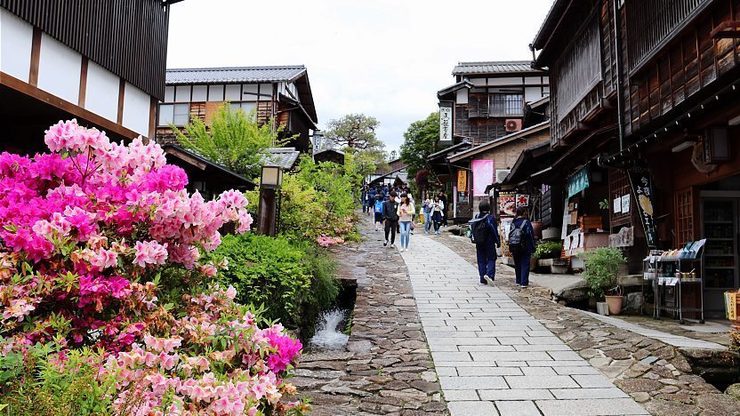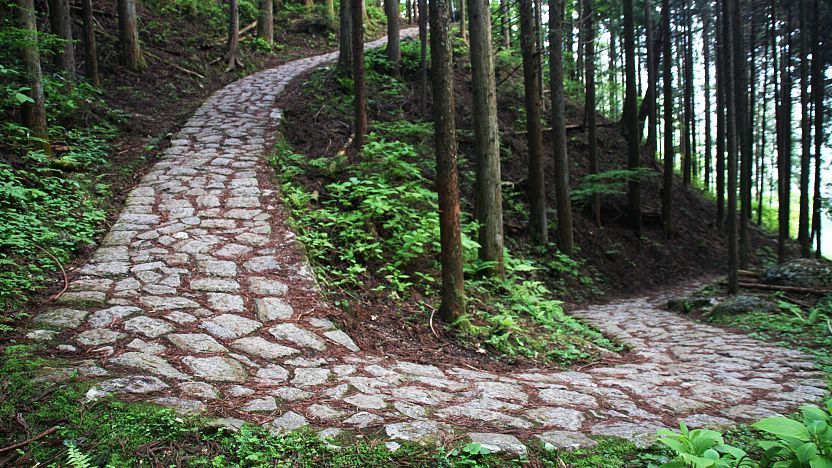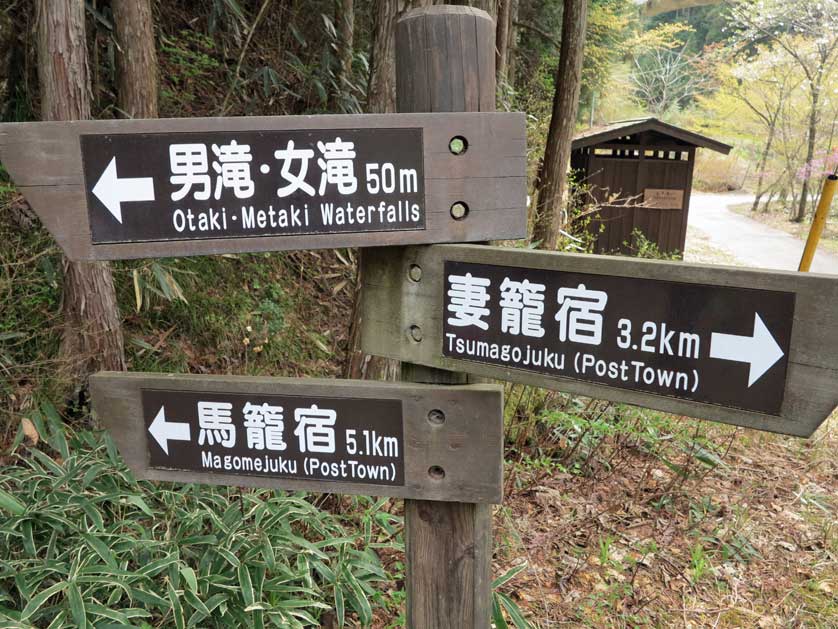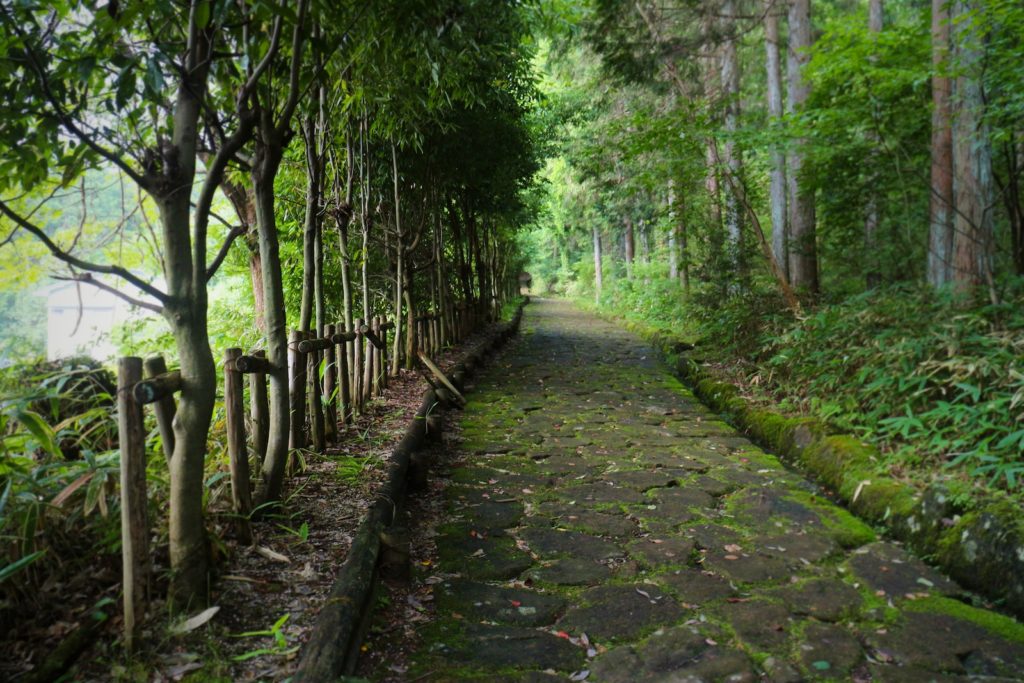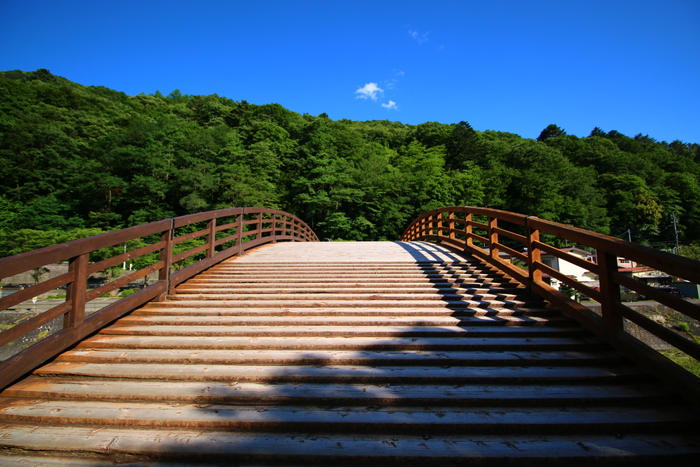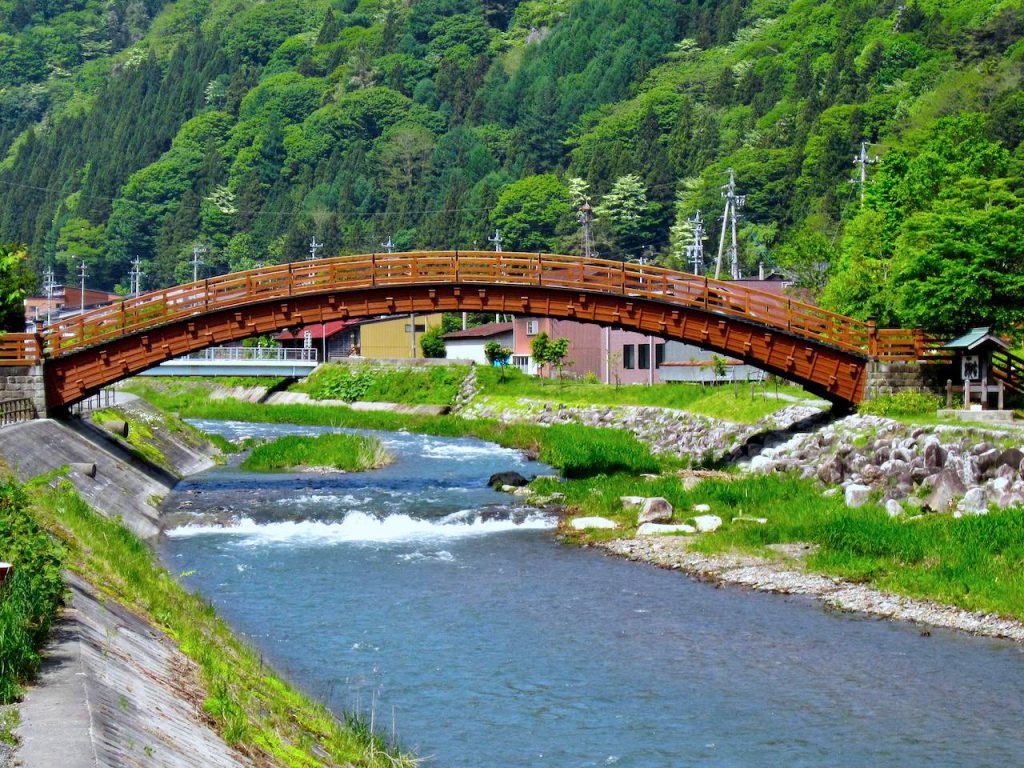Carved deep in the mountains by the Kiso River, the Kiso Valley (木曾谷) lies in southeastern Nagano prefecture, safeguarded by the steep slopes of sacred Mt. Ontake and the majestic central Japanese Alps. It is a V-shaped valley, with a length of approximately 60 km, following the river as it flows into Gifu Prefecture.
Due to the remoteness and rough terrain of the Kiso Valley, many of the post cities here have resisted modernisation, so visitors can see them almost unaltered, as they would have appeared hundreds of years ago.
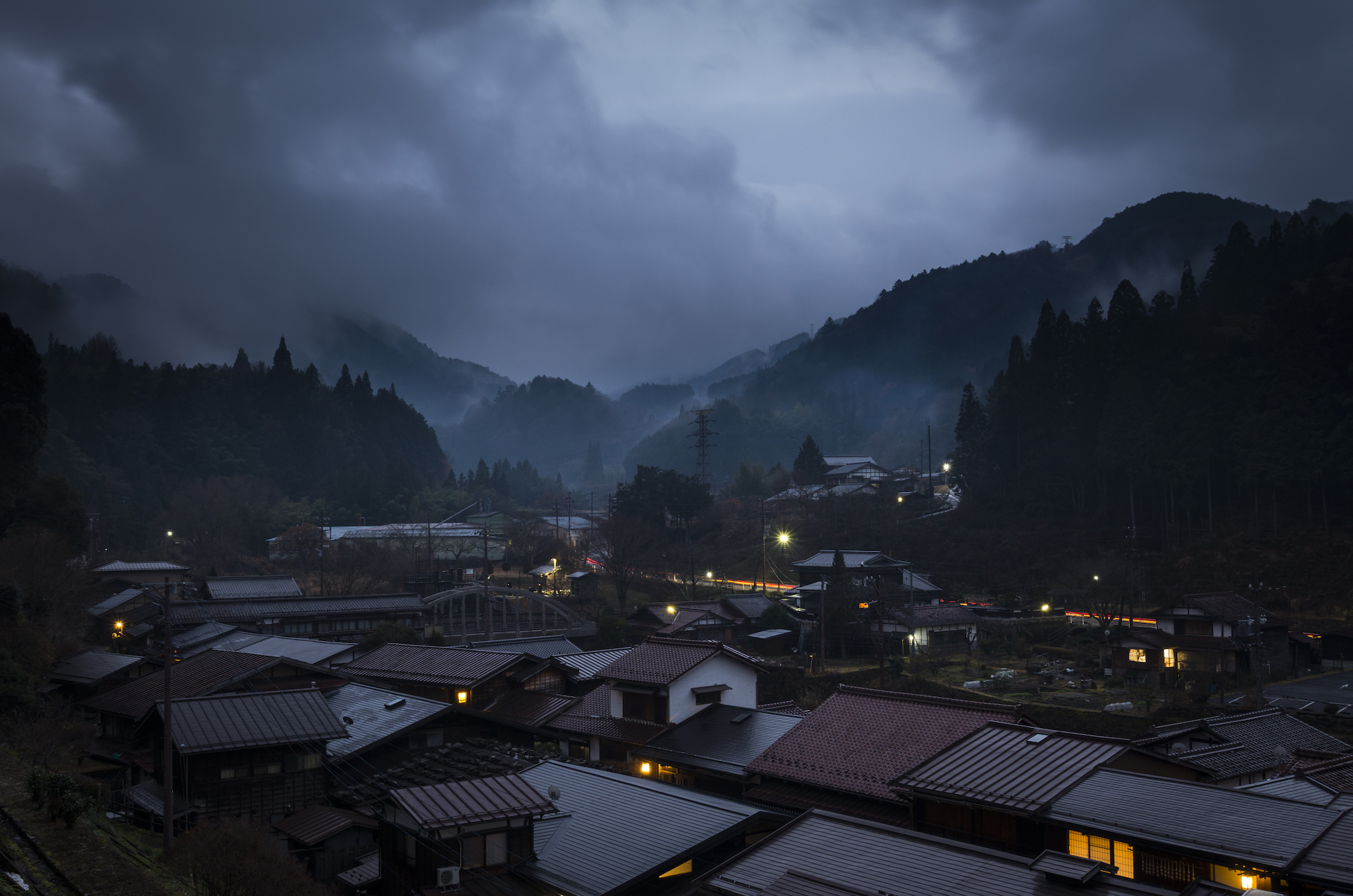
Kiso Valley, Japan. Credits: maplogs.com
There are eleven jewel towns hidden along the old Kisoji trail in Kiso Valley, still standing to tell stories about the past. Some of the most preserved ones are Tsumago, Magome and Narai.
Tsumago (妻籠宿)
Located in the southern part of Nagano prefecture, Tsumago takes about 15 minutes to walk from end to end. The villagers have done a great deal to recreate the Edo era townscape. Cars are restricted, while phone lines and power cables are carefully tucked out of sight. The smell of old cedar and pine wood, medieval lamps and springs to drink water from invite travellers to imagine they have fallen back in time.
The main street in Tsumago feels like an open-air museum. Credits: thegate12.com
At some point in history, the city plunged into obscurity being bypassed by the Chūō Main Line railway. Yet, in 1968 the local council decided to preserve its heritage for posterity, so the residents started to rebuild the village. By 1971, some 20 houses had been restored along the old main street. A charter was agreed that no house in Tsumago should be “sold, hired or destroyed”.
Preserved honjin and wakihonjin buildings add to the old post-town atmosphere of Tsumago. The wakihonjin “Okuya” is particularly famous for its beautiful interior. The sun shining through the wooden windows onto the tatami floor is astonishing.
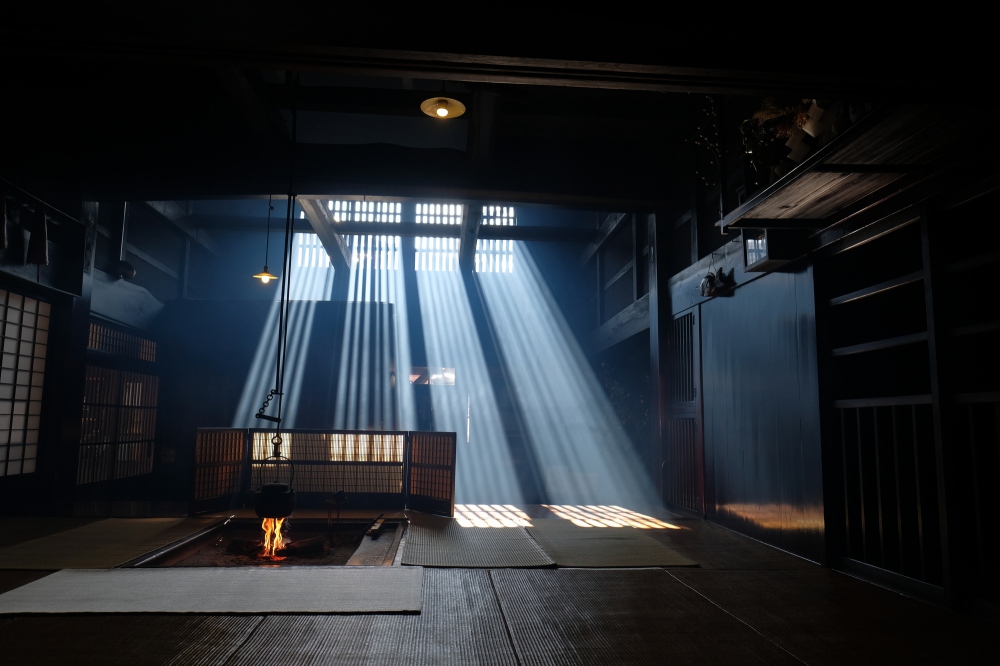
Interior of wakihonjin Okuya. Credits: thegate12.com
The Rurisan Kōtoku-ji (光徳寺) buddhist temple, with its stone foundation and white walls wrapped in wood, rises one floor above the other buildings. Established in 1500, it is notable for the 500-year-old cherry tree in the front and its Nightingale floors.
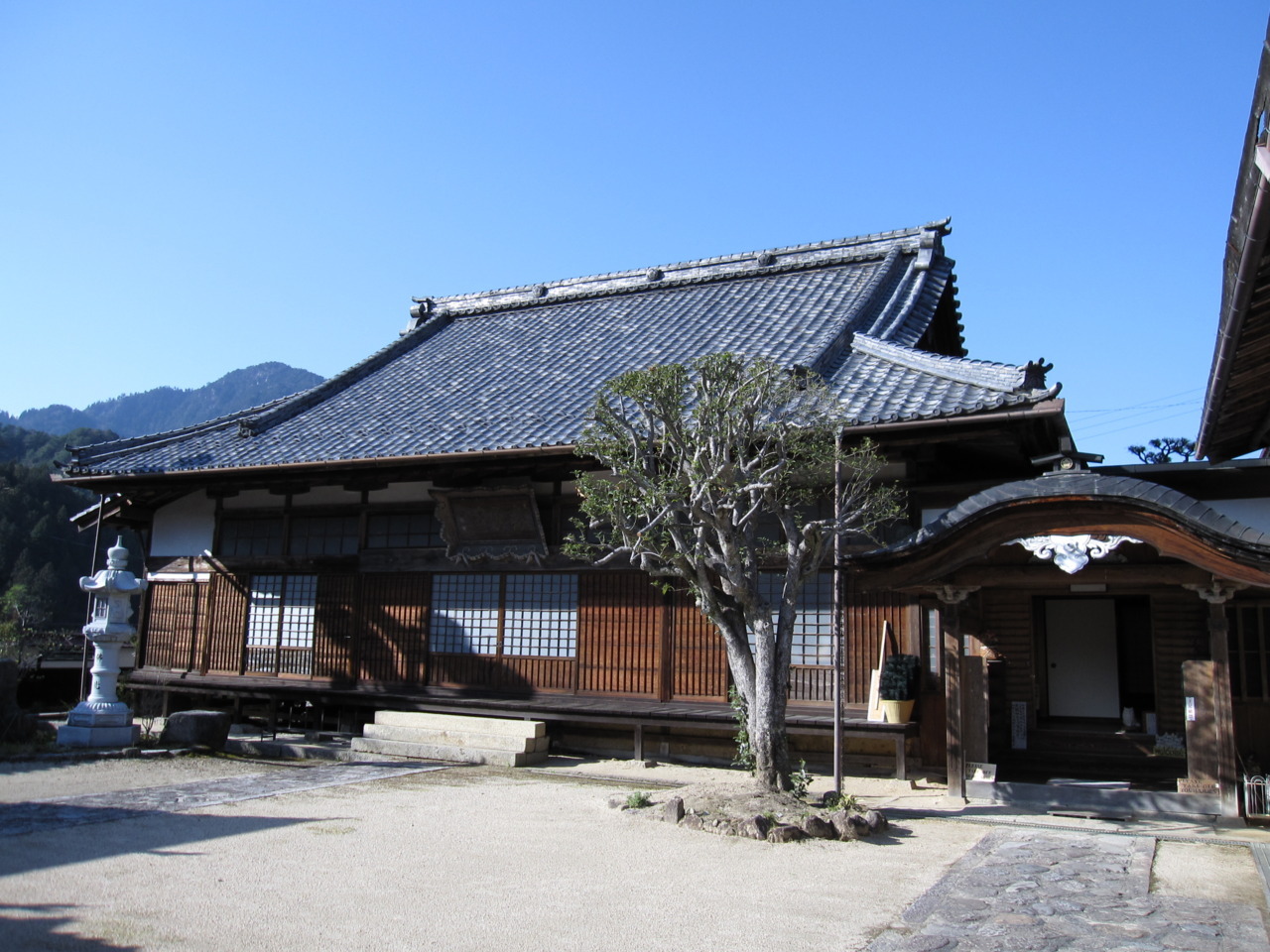
Rurisan Kōtoku-ji temple in Tsumago. Credits: pamandjapan
The Nightingales or “singing floors” make a chirping sound as you step on them. They were used in the hallways of some old temples and palaces built across Japan. Dry boards naturally squeak under pressure, but these floors were designed in such a way that the flooring nails rub against a clamp, creating chirping noises.
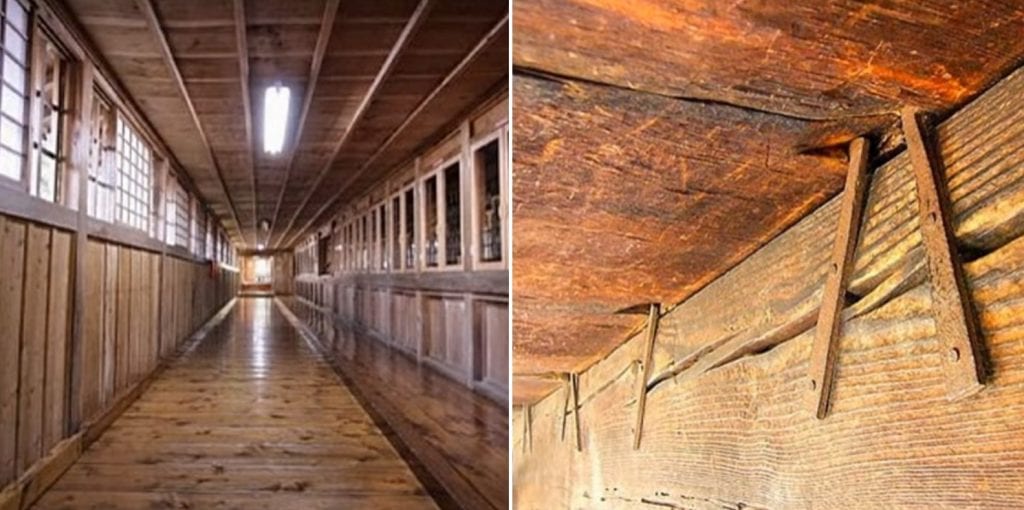
Nightingale floors and clamps. Credits: nextshark.com
It is not clear if the concept was deliberate or not. It seems like, at least initially, the result was due to chance. Yet, legends tell that the squeaking floors were intentionally used as a security measure, ensuring that no one could sneak through the corridors undetected.
Sound of a person walking on a “nightingale floor”.
At night, Tsumago village is lit up by lamps displaying the original scenery of the Edo period. The town is home to many minshuku and ryokan (Japanese-style guest houses), and a stay at one of them would greatly contribute to the illusion of escaping modern age.
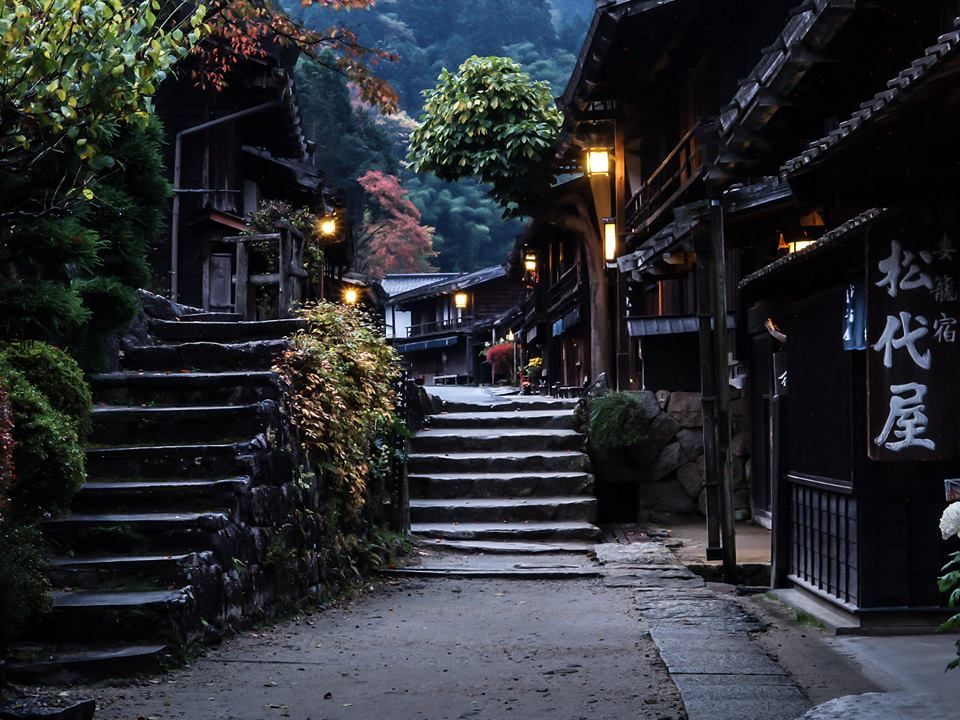
Tsumago at night. Credits: @msablack
Tsumago location: Nagiso City, Nagano Prefecture.
Magome (馬籠宿)
Magome is another pearl along former Kisoji road. It is located towards Nakasendō’s southern end, in Gifu prefecture, being one of the very few post-towns built on a hill. Because water was difficult to carry up to the village, Magome was very prone to fires. The city burned down twice in 1895 and in 1915, most of the original buildings being destroyed. Magome has been completely restored since then.
Magome with Central Alps in the background, at sunrise. Credits: japancheapo.com
While the wooden houses, walkways, and gardens around the city seem to be popped out from a historic movie, city’s most structures are relatively new, dating from early 20th century.
Compared to Tsumago, Magome has a more touristic feel with a few more diners, teahouses and shops along the main street. That’s why sometimes it can get crowded, especially in summer weekends or during national holidays.
Streets of Magome. Credits: i.imgur.com
Specific to Magome are the picturesque watermills placed on both sides of the street. Some of these still produce hydroelectric power used to light up the nearby sheds.
Watermills along Magome streets. Credits: styleforwanderlust.com
Truth is Magome’s streets and wooden inns exhibit stunning images that no one should miss. So, if someone is looking for a perfect time and place that highlights the distinctive facets of the Edo era, the advice is to visit Magome during winter. The snowfall sticks to the roofs of the inns as the lanterns light a subtle glow along the silent streets. The moment you release the shutter, the stillness of the raw flakes on the cobblestone will glide into your photographs.
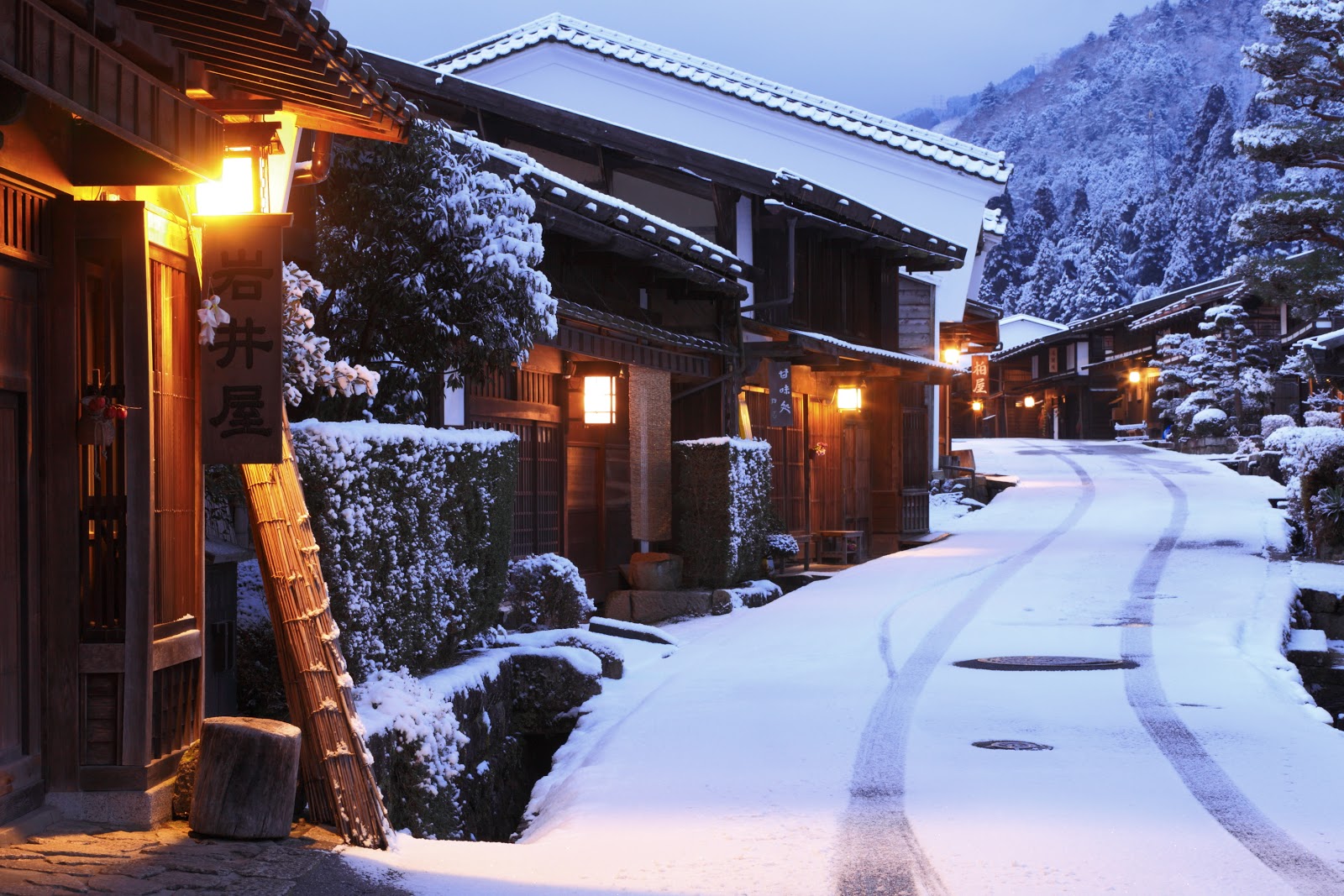
Magome after a light snowfall. Credits: imgur.com
Magome location: Nakatsugawa City, Gifu Prefecture.
Tsumago to Magome trail
To get between Tsumago and Magome there is an eight kilometre walk through Kiso Valley that takes you on a journey down a preserved mountain trail. The hike lasts roughly two to three hours while passing through tiny villages and cypress forests, near by shrines and ancient waterfalls.
-

Medaki – Female waterfall -

Otaki – Male waterfall
Credits: Left – guidoor.jp, Right – dougbartlettphotography
Otake and Medaki waterfalls, translated as “Male’s and Female’s waterfalls” are natural pools used in ancient times as separate bathing areas.
On the way, an altar dedicated to the memory of a 16th century samurai tells the story of the warrior that saved the villagers from a band of thieves at the expense of his own life. Such narratives inspired Akira Kurosawa’s film “The Seven Samurai”, and its later English adaptation, “The Magnificent Seven”.
Nakasendō trail between Tsumago and Magome. Credits: thecatyouandus.com

Here and there, you might come across some bells that you’re supposed to ring and scare any black bears sniffing around the area…
Credits: vacation-travel-adventure.com
Narai (奈良井)
At the northern end of the Kisoji section of the Nakasendō route lies Narai. Nicknamed “Narai of 1000 houses”, it was a prominent node for merchants during the Edo period. The post-town was discarded from the national road network during the Meiji period, but this fact only helped to the preservation of the place, as it once was. In 1978, Narai was declared a preservation district by the national government of Japan.
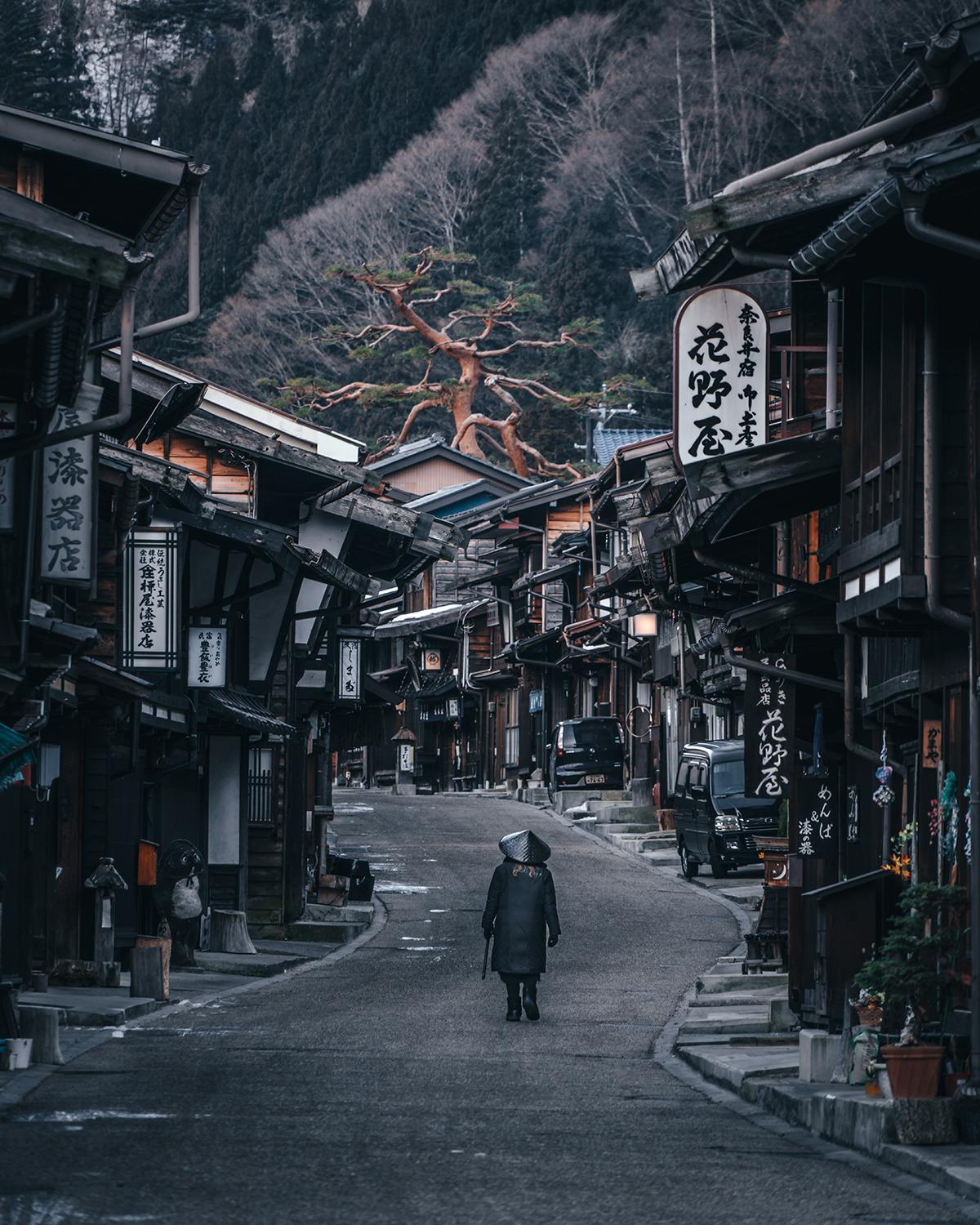
Narai. Credits: BeardedGlass
Narai is number 34 of the 69 stations along Nakasendō and still marks the mid-way point of the old route. The village stretches along one kilometre and has the longest walk of all. After dark, the village lights in Narai bring back the stillness of past nights.
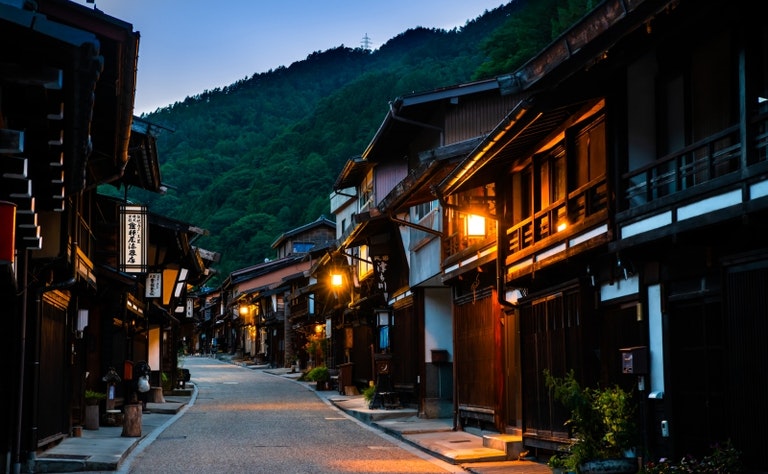
Narai at night. Credits: tripnote.jp
An impressive piece of history one can witness near Narai is the Kiso Bridge, Japan’s widest wooden bridge. It is a massive arched structure over the Narai River, built over 300 years ago using only Japanese cypress wood (hinoki).
Kiso Bridge, Narai. Credits: japanhoppers.com
Its reconstruction began in 1989 and took three years to complete. Kiso Bridge’s main beam is 33 meters long, it has a width of 6.5 meters and its middle point rises 7 meters above the stream of water. This complex piece of architecture is mesmerising, as it reveals both the warmth and the strengthens of the wood.

The meticulous craftsmanship is closely visible when looking under the structure, where each piece of hinoki overlaps in a puzzle-like pattern to create the arching of the bridge.
Credits: hassiweb-photo.blogspot.com
Narai location: Shiojiri City, Nagano Prefecture.
Inside the ancient cities along Kisoji trail, the legacy of the past remains. Even if they are long gone by now, the voices of those who travelled this roads still echo through the walls of the wooden inns. Light from their lanterns never lost its licker and keeps on warming the hearts of modern tourists passing by.
While wandering the Kiso Valley, time travelling might be inevitable for anyone looking to experience another vibrant dimension of Japan’s rich heritage.

Directions to Kiso Valley, by train. Source: kisoji.com
Main image credit: Hamusuta-san

